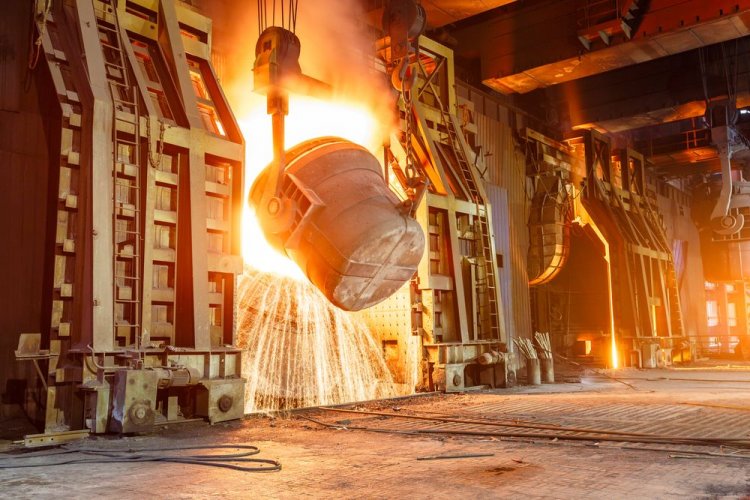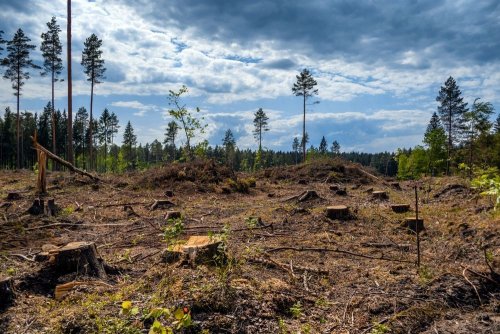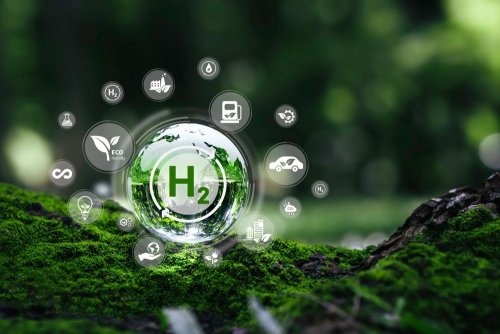Decarbonizing an average steel mill in the EU would require 1.2-1.3 GW of renewable electrolyzers at full load to produce enough "green" hydrogen to extract iron from ore.
When only SPPs are used for hydrogen production, the required electrolysis capacity will increase to approximately 4.5-5.0 GW, according to a new report by the trade association Hydrogen Europe, informs Recharge.
This will increase the required capital investment from €3.3 billion to almost €7 billion for one medium-capacity installation. And that doesn't include the renewable energy that will be needed to power the electric arc furnaces that make the steel.
The report, Solar Steel: A Feasibility Assessment of Green Steel Production, noted that if variable renewable electricity is used and the electrolyser cannot operate at constant full load, the problem becomes even greater.
A typical "BF-BOF" steelmaking process, which produces around 60% of steel in the EU, uses coke in a blast furnace (BF) to extract iron from iron ore with liquid pig iron (or hot steel). In the oxygen furnace (BOF), at the next stage, significant emissions of CO2 occur.
The steel sector is responsible for about 4% of greenhouse gas (GHG) emissions in Europe.
“The total of all installed BF-BOF plants in the EU is around 103Mt of hot metal per year,” the report explains. “Switching all of those plants to hydrogen-based DRI/EAF [direct reduced iron/electric arc furnace] could potentially save up to 196 million tonnes of GHG emissions per year, but in order to do so would require up to 5.3Mt of renewable hydrogen and up to 370TWh of additional renewable electricity generation (including EAF electricity consumption).”
At an average solar power factor of 12% in northern Europe (where most of the steel mills are located), producing 370 TWh would require over 350 GW of PV panels. The production of 370 TWh of wind energy at an average European fleet capacity factor of 26% (including onshore and offshore installations) would require more than 160 GW of turbines.
“Securing access to a sufficient amount of low-cost renewables will also be a challenge — especially in the northern part of Europe,” says the report.
As of the end of 2021, 187.5 GW of wind power and 160.3 GW of solar power were installed in the EU, with only 256.9 electrolyzers currently operating in the world.
Europe produced 279.4 million tons of steel in 2020, Asia - 1.4 billion tons, which is four times more.
To be competitive with current steel production, green H2 would have to be delivered to the EU at below €3 kg in the high price scenario and below €1.50 kg in the high price scenario, compared to an estimated €5.30 kg for today. The high price scenario assumes current high energy prices, while the adjusted price scenario adjusts downward to reflect potential future long-term fossil fuel price levels.
At current green hydrogen prices, each ton of crude steel would be €126-203 more expensive if produced using the DRI-EAF method, which for a typical gasoline vehicle translates into an additional cost of €100-170 per vehicle.
Other challenges for the decarbonisation of the European steel sector include where all the renewable hydrogen will be produced and how to ensure a constant supply of it for the DRI process.
“While underground hydrogen storage in salt caverns offers a cost-effective solution, underground salt formations are not uniformly available across the whole EU. Furthermore, multiple salt caverns might be needed for a single steel plant.” the study says. – “While imports of renewable hydrogen are most likely inevitable for some EU countries, because of the low hydrogen break-even price, the steel sector will remain a challenging market for imported hydrogen."
Another option for regions with a shortage of renewable resources is to produce hydrogen on-site, using electricity supplied through the grid. However, in this case, ensuring a sustainable supply of hydrogen remains a challenge, as available storage options are expensive.
However, in its latest draft Renewable Energy Directive, the European Commission called for an hourly temporal correlation for H2 production with renewable sources. In simple terms, this means that hydrogen producers would have to prove that their H 2 produced only when the sun was shining or the wind was blowing.
The report noted that this requirement would create a significant barrier to the deployment of DRI-EAF based on renewable hydrogen. On the other hand, allowing 24-hour balancing of renewable energy production with its consumption for hydrogen production would allow the sector to increase the share of RES in hydrogen production to more than 80% without any additional storage — significantly reducing capital requirements and thus increasing economic attractiveness of the use of green hydrogen in the metallurgical sector.
German energy company RWE says the regulation will put "unnecessary shackles" on the sector.
“This temporal correlation means that electrolysers would have to sit idle during any extended calm period. The result would be an unnecessary increase in the price of hydrogen due to more complex operations, and would make it almost impossible to ensure a continuous supply to industry.” RWE said.
Hydrogen Europe CEO Jorgo Chatzimarkakis has previously stated that the EU should follow India’s example by allowing renewable energy for green hydrogen production to be “banked” — sent to the grid in times of excess wind/solar with developers taking the same amount of electricity from the grid at a later time — or derived from clean electricity bought through power exchanges.
Hydrogen Europe noted that the sector is clearly responding to the increasing pressure to decarbonise, with many companies already stepping forward as leaders in the transition.
“Several projects all over Europe, led by key stakeholders such as ArcelorMittal, LKAB, SSAB, Thyssenkrupp, Vattenfall and others, are already in development and will play a major role in the ramp-up of the necessary technology and proving the business case for green steel,” it concludes.
Earlier, EcoPolitic wrote, that the US Department of Energy plans to finance the development of decarbonization, for key industries, in particular for metallurgy.
As EcoPolitic previously reported, European producers of green steel call for 2030 to create 31 GW of capacity renewabl*e energy to support the transition to low-carbon steel.





